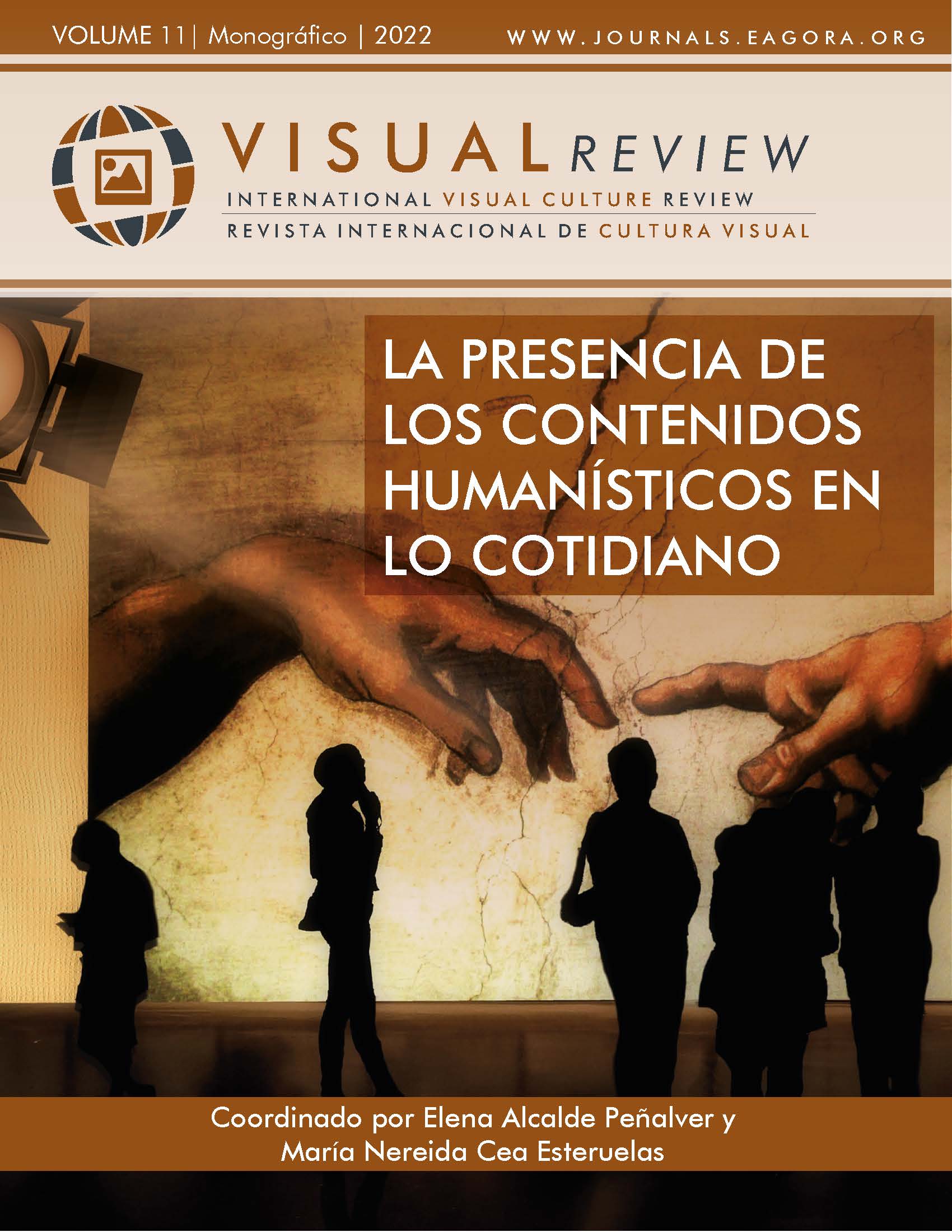ICT and their effect on motivation and performance in Visual Art
An action-research proposal
DOI:
https://doi.org/10.37467/revvisual.v9.3675Keywords:
Visual learning, ICT, Art education, Secondary Education, Motivation, Academic performance, Digital NativesAbstract
The present research shows the results obtained, in relation to the academic performance and motivation variables, from an educational programme based on the use of ICT. A quasi-experimental study is proposed, adopting a "pre-test- post-test-recall test" design with a control group using manual procedures and an experimental group using ICT tools.
To measure the variables, we used two validated questionnaires, a checklist and a rubric agreed by a committee of experts. The results reveal that the implementation of an ICT methodology in the classroom does not lead to an improvement in performance or an increase in student motivation.
Downloads
Global Statistics ℹ️
|
763
Views
|
559
Downloads
|
|
1322
Total
|
|
References
Arnheim, R. (1971). El pensamiento visual. In El pensamiento visual (pp. 343-343).
Barrera-Osorio, F., & Linden, L. (2009). The use and misuse of computers in education: evidence from a randomized experiment in Colombia. World Bank Policy Research Working Paper, (4836). DOI: https://doi.org/10.1596/1813-9450-4836
Bauman, Z. (2007). Los retos de la educación en la modernidad líquida. Diálogos sobre educación. Temas actuales en investigación educativa, 3(5), 1-4. https://www.redalyc.org/articulo.oa?id=553457065011
Bennett, S., & Maton, K. (2010). Beyond the ‘digital natives’ debate: Towards a more nuanced understanding of students’ technology experiences. Journal of computer assisted learning, 26(5), 321-331. https://doi.org/10.1111/j.1365-2729.2010.00360.x DOI: https://doi.org/10.1111/j.1365-2729.2010.00360.x
Bennett, S., Maton, K., & Kervin, L. (2008). The ‘digital natives’ debate: A critical review of the evidence. British journal of educational technology, 39(5), 775-786. DOI: 10.1111/j.1467-8535.2007.00793.x DOI: https://doi.org/10.1111/j.1467-8535.2007.00793.x
Boyd, D. (2014). It’s complicated: The social lives of networked teens. Yale University Press.
Cabero, J. (2015). Aplicaciones de las nuevas tecnologías al ámbito socioeducativo. Antequera, ICEditorial.
Cabero, J. & Barroso, J.(coords.)(2015). Nuevos retos en tecnología educativa. Madrid: Editorial Síntesis. [Reseña]. Píxel-Bit. Revista de Medios y Educación, 48, 243-244. https://idus.us.es/handle/11441/45268
Echenique, E. E. G. (2012). Hablemos de estudiantes digitales y no de nativos digitales. Universitas Tarraconensis. Revista de Ciències de l’Educació, (1), 7-21. DOI: https://doi.org/10.17345/ute.2012.1.595
Education & Training 2010 (2004). The success of the Lisbon strategy hinges on urgent reforms — Joint interim report of the Council and the Commission on the implementation of the detailed work programme on the follow-up of the objectives of education and training systems in Europe. Official Journal, C 104, 1-19. CELEX: https://eur-lex.europa.eu/legal-content/EN/TXT/?uri=CELEX:52004XG0430(01)[legislation]
Ferreiro, F. (2006). El reto de la educación del siglo XXI: la generación N. Apertura, (6)5, 72-85. Universidad de Guadalajara. https://www.redalyc.org/articulo.oa?id=68800506
Freire, J. (2007, octubre 10). ¿ Quiénes son los nativos digitales?, y¿ por qué? Nómada, blog de Juan Freire. http://nomada. blogs. com/jfreire/2007/10/quines-son-los-. html.
Gerver, R. (2012). Crear hoy la escuela de mañana: la educación y el futuro de nuestros hijos: La educación y el futuro de nuestros hijos. Ediciones SM.
Huertas, A. y Pantoja, A. (2016). Efectos de un programa educativo basado en el uso de las TIC sobre el rendimiento académico y la motivación del alumnado en la asignatura de tecnología de educación secundaria. Educación XX1, 19(2), 229-250. DOI: 10.5944/educXX1.16464. DOI: https://doi.org/10.5944/educxx1.16464
Law, N., Pelgrum, W. J., & Plomp, T. (2008). Pedagogy and Ict Use in Schools Around the World: Findings from the IEA Sites 2006 Study: 23 (2008 ed.). Springer. DOI: https://doi.org/10.1007/978-1-4020-8928-2
Mertler, C. A. (2000). Designing scoring rubrics for your classroom. Practical assessment, research, and evaluation, 7(1), 25. https://doi.org/10.7275/gcy8-0w24
Palfrey, J. & Gasser, U. (2008). Born digital: Understanding the first generation of digital natives. Basic Book.
Prensky, M. (2001). Digital natives, digital immigrants part 2: Do they really think differently? On the horizon.9(6), 1-6. https://doi.org/10.1108/10748120110424843 DOI: https://doi.org/10.1108/10748120110424843
Raposo, M., & Martínez, E. (2011). La rúbrica en la enseñanza universitaria: un recurso para la tutoría de grupos de estudiantes. Formación universitaria, 4(4), 19-28. http://dx.doi.org/10.4067/S0718-50062011000400004 DOI: https://doi.org/10.4067/S0718-50062011000400004
Rianudo, M. C., Chiecher, A., & Donolo, D. (2003). Motivación y uso de estrategias en estudiantes universitarios. Su evaluación a partir del Motivated Strategies Learning Questionnaire. Anales de Psicología/Annals of Psychology, 19(1), 107-119. https://doi.org/10.6018/analesps DOI: https://doi.org/10.6018/analesps
Downloads
Published
How to Cite
Issue
Section
License
Those authors who publish in this journal accept the following terms:
-
Authors retain copyright.
-
Authors transfer to the journal the right of first publication. The journal also owns the publishing rights.
-
All published contents are governed by an Attribution-NoDerivatives 4.0 International License.
Access the informative version and legal text of the license. By virtue of this, third parties are allowed to use what is published as long as they mention the authorship of the work and the first publication in this journal. If you transform the material, you may not distribute the modified work. -
Authors may make other independent and additional contractual arrangements for non-exclusive distribution of the version of the article published in this journal (e.g., inclusion in an institutional repository or publication in a book) as long as they clearly indicate that the work was first published in this journal.
- Authors are allowed and recommended to publish their work on the Internet (for example on institutional and personal websites), following the publication of, and referencing the journal, as this could lead to constructive exchanges and a more extensive and quick circulation of published works (see The Effect of Open Access).













